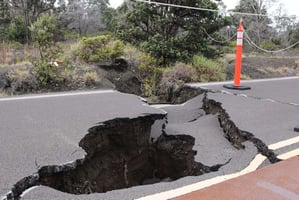The South Island of New Zealand is located on the boundary of two tectonic plates, the Pacific...
What would happen if the Alpine Fault and the Hikurangi Subduction Fault were to rupture at the same time in New Zealand?
If the Alpine Fault and the Hikurangi Subduction Zone were to rupture simultaneously in New Zealand, it would have significant and wide-ranging consequences. Both of these fault systems are capable of producing large earthquakes, and their simultaneous rupture would result in a complex and highly destructive seismic event.
The Alpine Fault is a major geological feature in the South Island of New Zealand, running for approximately 600 kilometers along the western edge of the Southern Alps. It is a right-lateral strike-slip fault, where two tectonic plates, the Pacific Plate and the Australian Plate, slide past each other horizontally. The fault has a recurrence interval of approximately 300 years, with the last major earthquake occurring in 1717 AD.
On the other hand, the Hikurangi Subduction Zone is located off the east coast of the North Island. It is a convergent plate boundary where the Pacific Plate is subducting beneath the Australian Plate. This subduction zone is characterized by intense tectonic activity, including slow-slip events and deep-sea trenches. The Hikurangi Subduction Zone has the potential to generate large megathrust earthquakes.
If both faults were to rupture simultaneously, it would likely result in a complex sequence of seismic events. The immediate impact would be a series of powerful earthquakes along both fault systems. These earthquakes would cause widespread ground shaking, leading to severe damage to infrastructure, buildings, and lifelines such as roads, bridges, and utilities.
The combined rupture of these faults could result in an extended duration of shaking due to their different characteristics. The Alpine Fault tends to produce shorter-duration earthquakes with higher frequency content, while subduction zone earthquakes like those on the Hikurangi Subduction Zone can have longer durations and lower frequency content. This combination could lead to increased structural damage and potential collapse of buildings not designed to withstand such prolonged shaking.
The seismic activity would likely trigger landslides in mountainous regions along the Alpine Fault, posing a significant hazard to communities and infrastructure. These landslides could block roads and rivers, leading to further disruption and potential flooding.
Another major concern would be the potential for tsunamis. The Hikurangi Subduction Zone is known to have generated large tsunamis in the past, and if it were to rupture simultaneously with the Alpine Fault, it could result in multiple tsunami waves affecting different coastal areas of New Zealand. This would pose a significant threat to coastal communities, causing widespread inundation and destruction.
The combined rupture of these faults would also have long-term effects on the geological landscape of New Zealand. It could lead to changes in the topography, including uplift or subsidence of land, as well as changes in river courses and drainage patterns. These changes would have implications for land use, agriculture, and water resources.
In terms of societal impact, such a seismic event would likely result in a high number of casualties and injuries. The destruction of infrastructure would disrupt essential services such as healthcare, communication, and transportation, making rescue and relief efforts challenging. The economic consequences would be substantial, with significant costs associated with rebuilding and recovery.
It is important to note that predicting the exact outcome of simultaneous ruptures of the Alpine Fault and the Hikurangi Subduction Zone is challenging due to the complexity of seismic events. The behavior of earthquakes is influenced by various factors such as fault geometry, stress accumulation, and local geological conditions. Therefore, detailed modeling and analysis specific to this scenario would be required to provide more accurate predictions.




